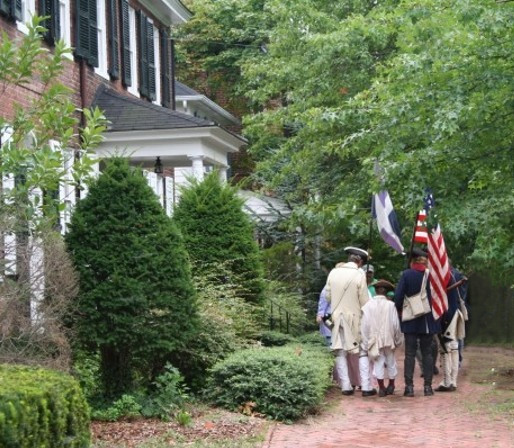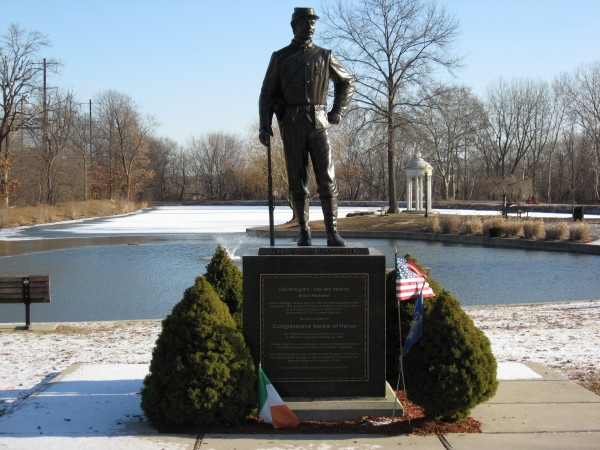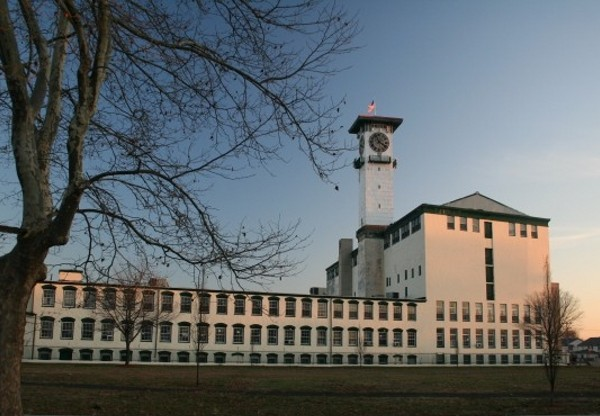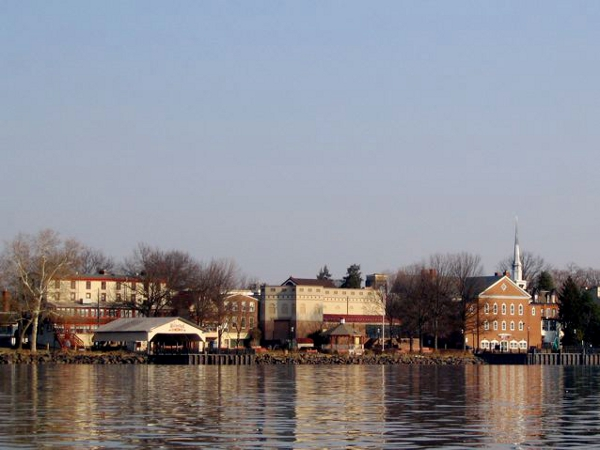


'Welcome Friend' has served Bristol as a motto since a wooden sign greeted the Marquis de Lafayette on his 'Farewell Tour of America' in 1824. The original sign still hangs within the Borough Hall, where it continues to greet newcomers as well as locals.
More than three centuries have passed since the town's first European settlers occupied the 262 acres along the Delaware River now known as Bristol Borough. A major land route linking Philadelphia and New York City passed through Bristol and hotels along this road hosted a bevy of travelers when the United States capitol was located in Philadelphia just after the American Revolution. Several of the first foreign ambassadors to America selected Bristol for their homes. These homes are still standing and are part of three centuries of architecture reflected in the residences and public building of the town. The oldest known building is the Friends' (Quaker) Meeting House, built circa 1711.
The transportation route used by those traveling between New York City and Philadelphia was bolstered in 1834, when construction of the main railroad line connecting the two cities passed through the small river town of Bristol. This means of public transport continues today with many regional trains servicing the town each day.
Bristol Borough has also been a site of recreation for the people of the area for centuries. The Bath Mineral Springs at Bristol were recommended by Dr. Benjamin Rush and Benjamin Franklin as an important health retreat. Silver Lake Park, located near this former mineral springs retreat and now part of the Bucks County Park System, offers a natural recreation area and nature center for people of all ages.
A canal between Bristol and Easton, Pennsylvania, was built for the transportation of anthracite coal to deeper areas of the Delaware River and stimulated economic growth for the community between 1827 and 1931. The canal was sixty miles long, forty feet wide, and five feet deep. One of the Bristol's parks is located at the lagoon of this former canal, near the former Grundy Woolen Mill and its iconic clock tower.
This mill is one of the most visible signs of the town's importance during the Industrial Revolution. Bristol's industrial prominence emerged following the American Civil War when an organization built factories and encouraged manufacturers to locate within the town. The first of the larger manufacturers was the Grundy Woolen Mill, which began production in 1876. Other mills followed with a variety of manufactured goods including wallpaper, ladies' garments, patent leather, fringe and braids, cast iron products, woolen rugs and carpets, hosiery, woolen cloth and wooden products. The river, canal and railroad were crucial to the shipping of both raw materials and finished goods.
Bristol offered a ferry service that connected it to the city of Burlington, New Jersey, from its founding in 1681 until the opening of a bridge across the Delaware River in 1931. Steam boat service between Trenton, New Jersey and Philadelphia also played a key role in community development, since many lines had stops in Bristol.
Bristol's location on both a wide river and a major shipping route further proved its worth in the early 20th century. At the time of World War I, a shipyard opened in Bristol and twelve shipways provided ample space for the construction of merchant ships. At the end of the war, the eighty acres where the shipyard was located was converted into an important aircraft factory which built amphibious planes and in the Second World War, military planes.
Because of Bristol's location as a crossroads and due to its industrial history, the town has a long attracted and accepted a diverse citizenry. Four monuments in the riverfront park served as a reminder of the town's cultural diversity and festivals centered on ethnic heritage are held annually. During the summer months, free weekly concerts are provided in Riverfront Park by the local Lions Club. Musicians perform in a gazebo erected by the Club. In autumn, the historic society sponsors Historic Bristol Day reminiscent of the great fairs held in town during the colonial period.
In the past half century, Bristol has experienced a renaissance in the preservation of its historic buildings. A professional theater was opened and continues to provide theatrical productions year round. A state-of-the-art library serves not only as an information center, but as place where children and adults can expand their knowledge by attending programs, lectures, and events. Next to the Library is the Grundy Museum, a Victorian-era house museum that offers free guided tours and exhibits the elegant belongings of the former occupants. An indoor ice rink and recreation center attracts both children and adults.
Today, the residents of this bustling riverside community manage to incorporate its historic past seamlessly into the fabric of its present as they continue the longstanding tradition of 'Welcoming Friends'.


